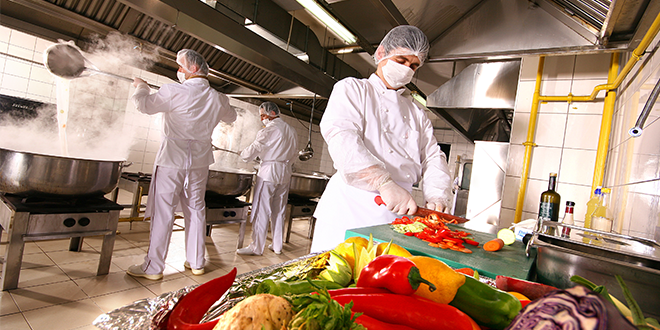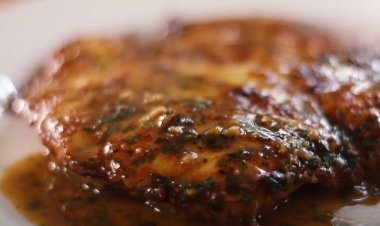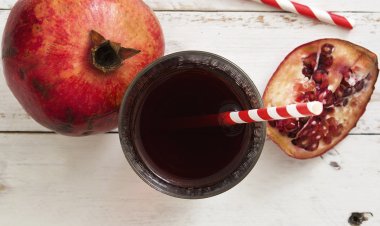How to Become a Food Influencer: Expert Strategies for Success
How to Become a Food Influencer: Expert Strategies for Success

Imagine this: Your Instagram is a feast for the eyes, your TikTok videos rack up millions of views, and brands are eager to collaborate with you. You’ve turned your passion for food into a successful career as a food influencer. Sounds like a dream, right? But how do you achieve this?
Becoming a successful influencer is challenging but doable with the right strategies. This guide is your roadmap to food influencer success. We’ll cut through the noise and give you actionable steps to:
- Craft a unique identity to stand out in the crowded food space
- Create content that keeps your audience returning for more
- Tactics on engaging with your followers
- Other tips to grow your followers and turn your accounts into a sustainable income stream
Ready to cook up success in the food-influencing world? Let’s start turning those culinary dreams into reality!
Choose your food influencer identity
Your unique identity sets you apart as an influencer in the crowded culinary social media scene. Establishing a well-defined persona is essential to stand out among the chefs, critics, and enthusiasts sharing their culinary adventures.
1. Niche
Your niche makes your approach to food unique. It could be serving healthy meals that combine nutrition and taste or being a vegan ambassador. Identifying your niche is the first step in creating your unique food influencer identity.
Here are some niche examples:
- Cuisine type (e.g., Italian, vegan, fusion)
- Cooking style (e.g. quick meals, gourmet, budget-friendly)
- Dietary focus (e.g., keto, gluten-free, plant-based)
Consider what you’re passionate about and the expertise that sets you apart.
2. Brand name
Your chosen name is the essence of your brand. It should be unforgettable and capture your cooking style. Your brand name needs to be catchy, hint at your content, be easy to remember and spell, and be available on all social media platforms you plan to use.
Here are some tactics for naming your brand:
- Use wordplay (e.g., “Kale and Kindness” for a vegan influencer)
- Incorporate your name (e.g., “Cooking with Claire”)
- Highlight your unique selling point (e.g., “The 15-Minute Chef”)
3. Style
Your style is linked to your niche and purpose as a food influencer. It’s the unique way you present content, interact with your audience, and express your culinary passion. Here are examples to help you understand the connection between niche, style, and purpose:
If your niche is quick, budget-friendly meals for college students:
- Style: Casual, relatable, and energetic
- Content: Fast-paced videos, cost breakdowns, and dorm-friendly cooking hacks
- Persona: The approachable “college cuisine guru”
For a niche in international street food:
- Style: Adventurous, culturally curious, and storytelling-focused
- Content: Travel vlogs, street vendor interviews, and recreating dishes at home
- Persona: The globe-trotting “street food connoisseur”
Remember, consistency is key. Your style should be evident across all your content, from writing tone and photography to video presentation and social media interactions.
Choose the right platform for your brand
Your chosen platform can significantly impact your success as a food influencer. Your niche, content style, and target audience should factor into this decision. The right platform can amplify your message and help you connect with your ideal followers, while the wrong choice might limit your reach or engagement.
For example, Instagram could be ideal for intricate pastry designs, while YouTube or a dedicated blog might be better for sharing detailed recipes.
Here is a snapshot of most popular platforms and their strengths:
| YouTube | TikTok | Blog/Website | ||
|---|---|---|---|---|
| Best for | Visual content creators | Cooking tutorials, food vlogs | Engaging younger audiences | Building a dedicated following and brand |
| Features | Stories, Reels, IGTV | Long-form videos, live streaming | Short-form videos, trending challenges | SEO optimization, easy product selling |
| Ideal for | Food photography, short videos | Detailed explanations and demonstrations | Quick recipes, food hacks | Detailed recipes, articles |
Remember, while it’s possible to maintain a presence on multiple platforms, it’s often more effective to excel on one or two that best suit your niche and style.
Create unique and engaging food content
Creating engaging content is crucial for attracting and keeping followers. These strategies can help you develop high-quality recipes that resonate with your audience and set you apart.
1. Post regularly
Consistency is key to maintaining your audience’s interest. Establish a posting schedule that aligns with your capabilities and stick to it. For example, share three recipes weekly, complemented by lifestyle content. A content calendar can help you plan ahead, ensuring a steady stream of posts. Consider theme days like Meal Prep Mondays or Dessert Fridays to structure your content.
2. Craft innovative recipes and share experiences
Your recipes should reflect your unique culinary voice. Let your creativity shine whether reimagining classics or inventing new dishes. Share your kitchen triumphs and tribulations – your audience will appreciate the authenticity. For example, document your journey to perfect a challenging technique, offering insights.
3. Prioritize visuals and presentation
Aesthetics matter in food content. Invest time in honing your food photography and videography skills. Your visual style should be as distinctive as your culinary one. Experiment with backgrounds, props, lighting, and plating styles to develop your signature look.
4. Build content around trending topics
Incorporate current food trends and cultural movements into your content. This could mean showcasing seasonal ingredients, exploring popular diets, or participating in viral food challenges with your unique twist. Check out @feelgoodfoodie’s post, where she tries a viral pasta dish. In addition to her visually stunning content, she added an engaging, fun fact to add more value for her followers.
Engage with your audience
Building a thriving community around your food influencer brand requires consistent, meaningful engagement. Here are key strategies to connect with your audience:
- Respond to comments: Regularly check and reply to comments on your posts to show you value your followers’ input and encourage further interaction.
- Run contests: Organize contests or giveaways featuring your favorite kitchen tools or ingredients to boost engagement and attract new followers.
- Create themed campaigns: Run campaigns like “Meatless Mondays” or “Seasonal Specials” to encourage audience participation and content creation.
- Gather feedback: Use polls or surveys to gather feedback on your content or involve followers in decision-making, such as choosing your next recipe.
- Send newsletters: Use email newsletters to send regular updates to subscribers. Share exclusive recipes, tips, or behind-the-scenes content to foster a closer connection.
- Encourage user-generated content: Invite followers to share their versions of your recipes, or ask them to request a recipe for you to try. Feature the best submissions on your profile and credit the creators.
- Host live activities: Host live sessions of cooking demonstrations or Q&A to interact directly with your audience.
Develop your skills
As a food influencer, continuous learning and skill development are crucial for staying relevant and growing your brand. Here are key areas to focus on:
- Photography and video skills: Depending on your main platform, invest in food photography or video-making courses to allow your cooking skills to shine professionally.
- Cooking courses: You can take classes to expand your culinary skills as well. In addition to increasing your credibility, learning about new techniques or cuisines will give you more to share with your audience.
- Social media marketing: To ensure high traffic, stay updated with the latest trends and algorithms of the social media platforms you use. Consider taking a digital marketing course on food and lifestyle content to optimize your online presence.
- Food styling: Invest in learning to make your dishes look irresistible to elevate your content and appeal to followers and potential brand collaborations.
- Writing: Improve your recipe writing and storytelling skills. Clear, engaging writing can enhance your blog posts, captions, and newsletters.
Networks and collaborations
Collaboration is a key ingredient for growth and success for a food influencer. Take Beryl Shereshewsky, a YouTuber known for her global food explorations, who collaborates with YouTubers from all around the world to discover unique recipes. Check out her video on egg dishes from around the world to see how she does it.
Here are some effective ways food influencers can partner up, each offering unique opportunities to expand their reach and diversify their content:
- Guest posts and interviews: Partner with influencers or food blogs to write guest articles or conduct interviews, sharing expertise and reaching new audiences.
- Recipe exchanges: Swap recipes with fellow food bloggers or chefs to offer your audience diverse culinary styles and ideas. Refer to this guide on the sources of inspiration for food bloggers.
- Product reviews and brand partnerships: Collaborate with food brands for product reviews, introducing new items to your followers while providing visibility to the brands.
- Social media collaborations: Team up with influencers on platforms like Instagram for joint posts or story takeovers, leveraging each other’s followers to expand your reach. Check out the top 10 Instagram food bloggers list that showcases the results of a successful social media integration.
- Cooking challenges or joint ventures: Participate in or organize online cooking challenges and events to bring together multiple food personalities for shared experiences.
Track your metrics
Analytics provide insights into what resonates with your audience, allowing you to refine your content strategy. Familiarize yourself with the analytics tools on your chosen platforms and pay attention to key metrics like engagement rates, follower growth, and reach.
YouTube Analytics provides detailed metrics on video watch time and audience retention, including information on traffic sources and viewer demographics, and trending topics in your niche.
If your main platform is Instagram, you can access follower demographics, post reach, and engagement in Instagram Insights. It also highlights your best-performing content and peak times when your audience is most active.
TikTok Insights provides metrics on video views, likes, comments, and shares, offers insights on audience demographics and locations, follower growth, and videos driving that growth. It also highlights trending sounds and hashtags relevant to your niche.
For more comprehensive analytics, consider using third-party tools like Hootsuite, Sprout Social, or Buffer. These platforms offer in-depth data, customizable reports, competitor performance tracking, and management of multiple social media accounts.
Monetization strategies for food influencers
Turning your culinary passions into a profitable endeavor is achievable. According to Huffpost, a food influencer that hid her identity for the sake of privacy revealed that she made around $150,000 a year from her content. There are many ways to make money by sharing your passion for food.
- Sponsored posts: A substantial slice of revenue for food influencers comes from sponsored posts. You can partner with food brands that match your style and audience, who will pay you to include and promote their products in your recipe posts.
- Affiliate marketing: Integrating affiliate links in your blog posts or social media content can help you earn money with very little effort on your part. This could include links to kitchen equipment, ingredients, or other food-related products.
- Cookbooks or paid recipe content: Imagine your recipes bound in a digital or print cookbook, a collection that fans are eager to purchase. You can use your social media platforms to preview recipes and tempt readers to purchase the complete collection of culinary creations.
- Online cooking classes or workshops: Step in front of the camera and charge a fee for an immersive culinary workshop or cooking class. Engaging directly with your audience boosts your earnings and helps you build influence and authority in the food community.
- Ads and ad networks: Venture into the world of advertising with Google AdSense or Mediavine. By strategically placing ads on your blog, you create an additional income stream.
- Merchandising: Sell personalized merchandise such as kitchen apparel or curated ingredient boxes that echo your influencer identity. You can use e-commerce platforms to manage your online store.
- Subscription-based content: Consider offering exclusive content for those who want more from your kitchen. WordPress allows for the creation of a membership site, and platforms like Patreon can offer your audience a subscription model for special content, early recipe access, and a peek behind the scenes.
- Using plugins: If you have a food blog on WordPress, there are plugins you can use to support your monetization efforts. A plugin for preparing recipe cards, WP Recipe Maker, is one such plugin. It allows you to easily add ingredient and equipment links to your recipes and makes affiliate marketing a lot easier. It also supports adding ads to your recipes and displays a summary of them in your cookbook.
Elevate your food influencer game with WP Recipe Maker
As you become a food influencer, remember that a strong online presence across multiple platforms is key, and a dedicated food blog is essential for building a deeper connection with your audience. A food blog is where you share your culinary journey, connect with your audience, and monetize through product sales and affiliate marketing.
You need the tools to make your food blog stand out to succeed. This is where WP Recipe Maker comes in – a game-changing plugin for food bloggers using WordPress. This tool can boost your credibility as a food influencer by helping you create professional, user-friendly, and SEO-optimized recipe cards. With customizable templates, recipe collections, and automatic nutrition data generation, WP Recipe Maker allows you to present your culinary expertise in a visually alluring, professional way.
Create content that keeps your audience returning and attracts potential brand collaborations and sponsorships. Establish yourself as a culinary authority with polished, mouthwatering recipes. Download WP Recipe Maker today to take your food influencer game to the next level!












